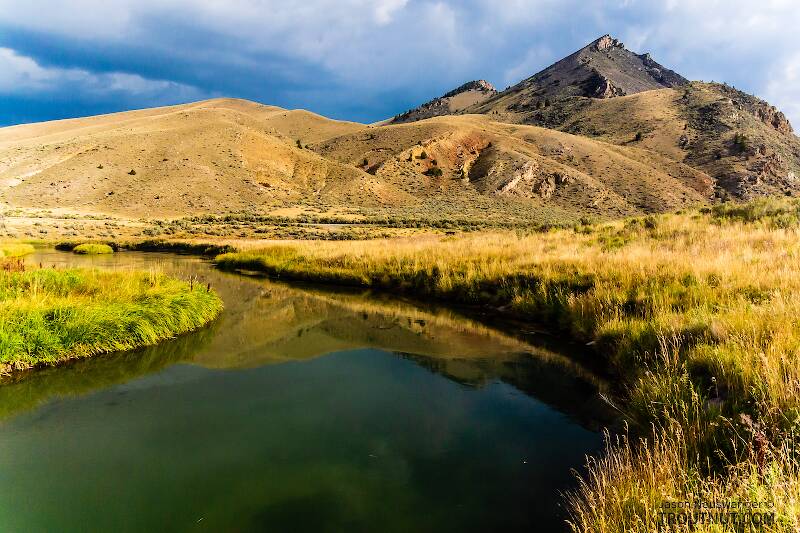
Salmonflies
Pteronarcys californica
The giant Salmonflies of the Western mountains are legendary for their proclivity to elicit consistent dry-fly action and ferocious strikes.


Stonefly Species Isoperla rainiera (Yellow Sallies)
Species Range
Physical description
Most physical descriptions on Troutnut are direct or slightly edited quotes from the original scientific sources describing or updating the species, although there may be errors in copying them to this website. Such descriptions aren't always definitive, because species often turn out to be more variable than the original describers observed. In some cases, only a single specimen was described! However, they are useful starting points.
Description from GBIFthe Global Biodiversity Information Facility
Source: The Isoperla Of California (Plecoptera: Perlodidae); Updated Male Descriptions And Adult Keys For 18 Western Nearctic Species
Male. Aedeagus: sclerotized posterior process present; body of aedeagus with one small posterior lobe, one dorsal lobe, and one anterior lobe (Fig. 13 a); sclerotized process length <0.5 mm, recurved, crescent shaped, apex broadly rounded with two lateral sharp hook-like projections directed anteriorly (Figs. 13 a-c). Abdominal terga 8 - 9, 9, 9 - 10: without stout spinulae or long stout setae. Posterolateral margins of at least abdominal segment 8 with scalelike setae clustered in brushes of several setae. Paraprocts: curved dorsally, length if straightened subequal to combined first and second cercal segments, tapering gradually to long sharp apices (Fig. 13 c). Vesicle: pedunculate, length subequal to width, constricted near base with curved lateral margins, wider and rounded at apex (Fig. 13 d).
Start a Discussion of Isoperla rainiera
Stonefly Species Isoperla rainiera (Yellow Sallies)
Species Range
Common Names
Resources
- NatureServe
- Integrated Taxonomic Information System
- Global Biodiversity Information Facility
- Described by Jewett, S.G. (1954) New stoneflies (Plecoptera) from western North America. Journal of the Fisheries Research Board of Canada 11, 543–549.

